Foreword
This article refers to the address: http://
The sensor is an important part of the automotive electronic control system. With the development of technology, the use of automotive sensors is more extensive. Many aspects of the safety, comfort and economy of the car are inseparable from the work of the sensor. To ensure the safe and normal driving of the car, we should be familiar with the working principle and structure of the sensors commonly used in automobiles, and be able to make timely and accurate judgments when they fail, and then diagnose and repair the car. Below we take the car water temperature sensor as an example to introduce the principle, structure and detection of the car water temperature sensor.
The performance of the vehicle temperature sensor has a great influence on the fuel injection amount of the engine, which in turn affects the combustion performance of the engine. When the mixture is too rich or too lean, the combustion condition of the engine will deteriorate, which will cause the engine to be difficult to start and the operation will be unstable. At this time, the water temperature sensor should be checked. To test the vehicle water temperature sensor, we must first understand the principle, structure and composition of the vehicle water temperature sensor.
1, the principle of automotive water temperature sensor
The inside of the car water temperature sensor is a semiconductor thermistor. The lower the temperature, the higher the resistance. On the contrary, the smaller the resistance, the smaller the heat is installed on the water jacket of the engine block or cylinder head, and it is in direct contact with the cooling water. Thereby the temperature of the engine cooling water is obtained. The electronic control unit measures the temperature of the engine cooling water according to this change. The lower the temperature, the larger the resistance; the smaller the resistance. The electronic control unit measures the temperature of the engine cooling water based on this change as a correction number for fuel injection and ignition timing. To put it simply, we can know the current state of the car's operation, stop or exercise, or how long it takes to exercise by the temperature of the engine's water temperature.
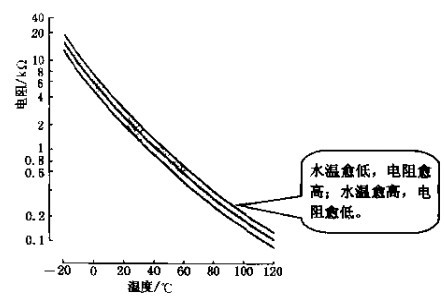
2, the composition of the car water temperature sensor
The automobile water temperature sensor assembly generally consists of a gasket, a water temperature sensor, and a wire joint, as shown in the figure.
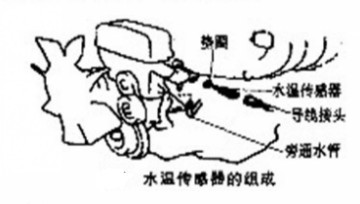
3, the structure of the car water temperature sensor
The vehicle water temperature sensor is mounted on the water jacket of the engine block or cylinder head and is in direct contact with the coolant to measure the coolant temperature of the engine. The temperature sensor used in the coolant thermometer is a negative temperature coefficient thermistor (NTC) whose resistance decreases with increasing temperature and a wire is connected to the electronic control unit ECU. The other is a ground wire as shown.
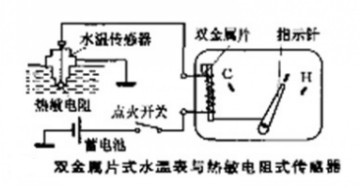
4, the role of automotive water temperature sensor
When the water temperature is too high due to a problem such as excessive load on the vehicle, lack of water, incorrect ignition timing, and no fan rotation. The engine body temperature will rise and the engine will not work, so the car water temperature sensor is designed in the instrument system. The vehicle water temperature sensor is used to detect the engine coolant temperature, so that the driver can visually see the temperature of the engine coolant in any working condition and timely deal with it accordingly. A coolant temperature sensor is also installed in the electronic control system for the fuel injection correction signal.
5, the detection of automotive water temperature sensor
1. Use a multimeter to detect the car water temperature sensor
(1) Check in the car. Turn off the ignition switch, remove the sensor connector, and test the resistance of the two terminals of the sensor with the Rx1 block of the car-specific multimeter. Take the THW and E2 terminals of Crown 3. O as an example. When the temperature is 0 °C, the resistance is 4-7 kΩ; at 20 °C, the resistance is 2 ~ 3k Ω; at 40 °C, the resistance is O. 9 - 1. 3k Ω; O.4 ~ 0. 7k Ω at 60 °C, 0. 2 ~ O. 4k Ω at 80 °C. The resistance value of the automotive water temperature sensor is inversely proportional to the temperature.
(2) One-piece inspection. Remove the car water temperature sensor wire connector and remove the sensor from the engine. Place the sensor in the water in the beaker and heat the water in the cup. As the temperature gradually rises. Use a multimeter to electrically block the resistance value of the measuring sensor and compare the measured value with the standard value. If it does not, replace the vehicle water temperature sensor.
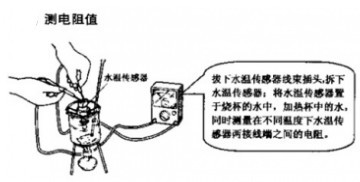
2. Inspection of the output signal voltage of the car water temperature sensor
Install the car water temperature sensor and plug the sensor connector. When the ignition switch is in the ON position, the connector "THW" terminal (Toyota) or the ECU connector "THW" terminal and E2 output voltage. The measured voltage should be inversely proportional to the temperature of the coolant. Remove the coolant temperature sensor harness connector, turn on the ignition switch, and measure the cooling temperature sensor's power supply voltage to 5V.
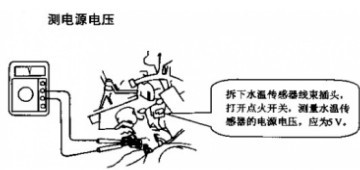
3. Inspection of the resistance value of the car water temperature sensor and ECU connection line
Use a high-impedance multimeter to block the resistance of the two connection harnesses of the vehicle water temperature sensor and the ECU (the resistance between the sensor signal end and the ground terminal and the two terminals of the corresponding ECU), and the line should be turned on. If the line is not conducting or the resistance value is greater than the specified value, the sensor harness is broken or the connector connector is in poor contact and should be further inspected or replaced.
Conclusion
There are many kinds of automotive sensors (automobile sensor applications), which brings some troubles to vehicle maintenance. Different sensor detection and maintenance methods are different, but understand the principle, structure and detection methods of automotive sensors. A lot of help, this article takes the car water temperature sensor as an example to introduce the principle, structure and detection of the car water temperature sensor.
Ningbo Autrends International Trade Co.,Ltd. , https://www.mosvapor.com
